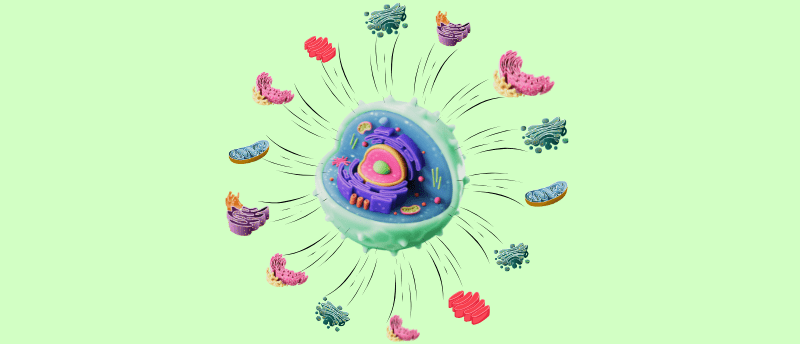Better out than in: cells eject ‘waste’ for more effective injury response

Old cells are able to revert to a younger state for a better injury response after radically jettisoning ‘waste’ material, rather than managing it through controlled degradation.
Cells eject ‘waste’ material to speed up their reversion to a stem-like state, researchers from the Washington University (WashU) School of Medicine in St. Louis (MO, USA) and the Baylor College of Medicine (TX, USA), led by senior author Jason Mills of Baylor, have reported. Dubbed ‘cathartocytosis’, this newly discovered mechanism helps cells focus on growing healthy tissue, rather than wasting energy on controlled degradation.
Experiencing injury causes differentiated cells to undergo massive reprogramming to allow them to regain a degree of pluripotency, allowing them to proliferate and repair the injury. For example, gastrointestinal (GI) cells revert into simpler progenitor–like spasmolytic-polypeptide-expressing metaplasia cells by dismantling their mature cell architecture. This controlled dismantlement process, or paligenosis, is well studied, but new evidence pointed to an additional mechanism for self-distruction.
Taking out the trash
The clearance of cell machinery during paligenosis was previously thought to take place entirely in the lysosome through autophagy; however, during his initial characterization of paligenosis, Mills had previously noticed cellular debris outside of cells undergoing renewal. Together with Jeffrey W. Brown (WashU Medicine), he and the team leveraged a murine model of stomach injury to investigate this debris and to asses whether it had come from the simultaneous ejection of waste material during paligenosis.
The team conducted immunohistochemistry and confocal microscopy for analysis of larger tissue samples, and studied individual cell components by utilizing Azure A staining and focused-ion beam scanning electron microscopy to create 3D reconstructions of the cells. They isolated and studied specified molecules with chloroform extraction and deglycosylation.
The team observed the excretion of sulfated glycoproteins, endoplasmic reticulum membranes and secretory granule cargo by the injured cells, demonstrating that to rid themselves of mature cell architecture, the cells simultaneously digest these structures in the lysosome and eject them from the cell. What’s more, the team was able to identify that the mechanism driving this expulsion of cellular contents was distinctly separate from autophagy, naming it cathartocytosis.
“After an injury, the cell’s job is to repair that injury. But the cell’s mature cellular machinery for doing its normal job gets in the way,” explained Brown. “So, this cellular cleanse is a quick way of getting rid of that machinery so it can rapidly become a small, primitive cell capable of proliferating and repairing the injury. We identified this process in the GI tract, but we suspect it is relevant in other tissues as well.”
 An insight into cell collective behavior
An insight into cell collective behavior
Different cell types and variation within these cells promote muscle breakdown and rearrangement during Drosophila development.
A double-edged sword
Whilst cathartocytosis may be an efficient way for cells to address injuries, it may be a mechanism by which mature cells become tumorigenic. A rapid increase in waste products in the body may also exacerbate chronic conditions that are fueled by inflammation.
The team suspects that cathartocytosis could facilitate continued injury and inflammation in H. pylori infections, which are known to increase the risk of stomach cancer. Their hope is that further investigation could lead to new biomarkers for early detection of GI cancers, or even new treatment options.
“In these gastric cells, paligenosis is a risky process, especially now that we’ve identified the potentially inflammatory downsizing of cathartocytosis within it,” Mills concluded. “These cells in the stomach are long-lived, and aging cells acquire mutations. If many older mutated cells revert to stem cell states in an effort to repair an injury – and injuries also often fuel inflammation, such as during an infection – there’s an increased risk of acquiring, perpetuating and expanding harmful mutations that lead to cancer as those stem cells multiply.”